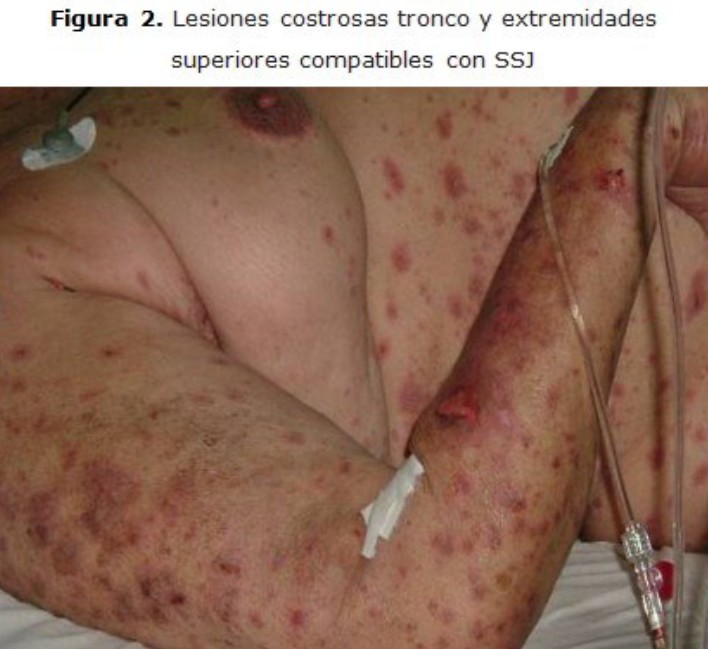Síndrome de Stevens-Johnson: presentación de tres casos
Texto completo:
PDF
Resumen
Fundamento: el Síndrome de Stevens-Johnson (SSJ) es una enfermedad grave, a menudo fatal, que ha sido considerada como un tipo de eritema multiforme, es causada generalmente por fármacos y de no ser diagnosticado y tratado de forma oportuna puede asociarse a secuelas importantes y la muerte.
Objetivos: describir y reseñar el tratamiento y evolución clínica del cuadro clínico de tres casos con diagnóstico de Síndrome de Stevens-Johnson, ingresados en Cuidados Intensivos.
Presentación de casos: se presentan tres enfermos, dos pertenecientes al sexo femenino y uno al masculino, con diagnóstico de SSJ asociados al empleo de fármacos. En los tres casos el tratamiento consistió en medidas de cuidados generales para la profilaxis y el tratamiento de complicaciones, esteroides sistémicos y además IgG intravenosa de producción nacional (intacglobin). Los tres pacientes evolucionaron de forma satisfactoria.
Resultados: se destaca la utilidad del uso de inmunoglobulina G intravenosa en el tratamiento de estos pacientes, así como su importancia en una unidad de cuidados para enfermos graves.
Conclusiones: en la casuística predominó el sexo femenino y el empleo precoz del Intacglobin (IgG IV) que contribuyó a una mejor evolución de los pacientes al detener la progresión de la enfermedad, evitar complicaciones y disminuir la estadía en las unidades de enfermos graves.
Background: Stevens-Johnson’s syndrome (SJS) is a serious disease, fatal most of the time, which has been considered as a type of erythema multiforme. It is generally caused by medicaments. If it is not diag-nosed and treated at appropriate time it can be associated to considerable sequelae and death.
Objectives: to describe the treatment and evolution of the clinical manifestations of three cases with the diagnosis of Stevens-Johnson’s syndrome admitted in the intensive care unit.
Cases presentation: the cases of two female patients and a male patient with the diagnosis of SJS, associated to the use of medicaments, are briefly presented. The treatment consisted of measures of general care for the prophylaxis and treatment of complications for the three cases. The patients were treat-ed with intravenous IgG of national production (intacglobin) and systemic steroids. The three patients im-proved their condition satisfactorily.
Results: the use of intravenous immunoglobulin G in the treatment of these patients stands out; as well as the importance of the treatment of seriously ill patients in an intensive care unit.
Conclusions: female sex predominated in the casuistics. The early use of Intacglobin (IgG IV) contributed to a better improvement of the patient’s condition arresting the development of the disease, avoiding complications and decreasing the hospital stay of seriously ill patients.
Palabras clave
Enlaces refback
- No hay ningún enlace refback.










 La Revista está: Certificada por el CITMA
La Revista está: Certificada por el CITMA Acreditados como: "Web de Interés Sanitario"
Acreditados como: "Web de Interés Sanitario"
